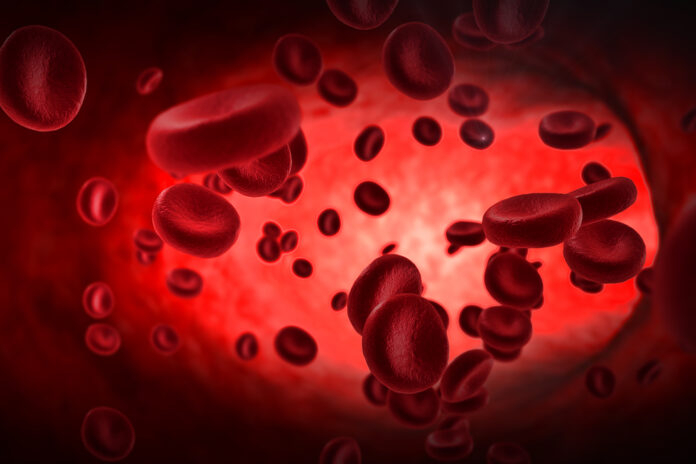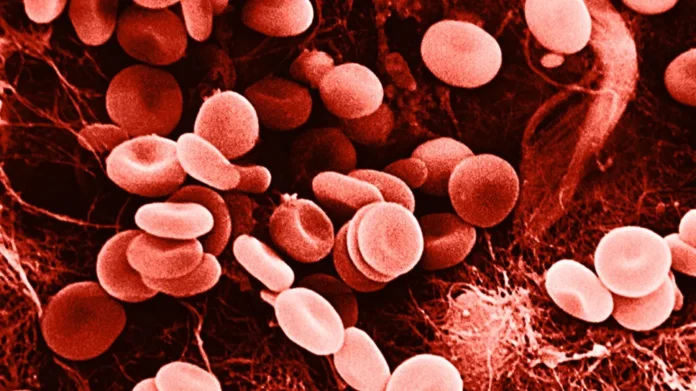Healthcare practitioners regularly refer to “blood dyscrasia,” but individuals may be perplexed (and even alarmed) by the word. For the most part, it refers to any blood-related illness. However, it is employed when a diagnosis is questionable (e.g., during the diagnostic) or in particular circumstances.
Haematological diseases (blood dyscrasias) are medical problems that may affect the cellular or plasma components of the blood, the bone marrow, or the lymph tissue. These include anaemia, leukaemia and lymphoma, disorders that cause the blood to clot or bleed excessively, and more.
When Do Doctors Use the Term “Blood Dyscrasia”?

Many varied and often contradictory definitions are given to the word “blood dyscrasias,” which adds to the confusion.
Blood, bone marrow, clotting proteins, and lymph tissue may all be affected by the disease. In clinical trials, the word may be used to describe any impact on these tissues caused by an experimental medicine.
There are situations when a precise diagnosis is not possible, and blood dyscrasias are used as a word of reference. Using the word “blood disorder” suggests that a condition is present, but additional investigation is required.
Precautions should be taken when there are risk factors, such as a clotting problem. For example, a blood clot investigation may need the usage of this phrase to describe the process of conducting a thorough examination of risk factors. A healthcare provider’s suspicions about an underlying illness (such as factor V Leiden) in a patient with blood clots or a stroke but no clear predisposing condition may be implied in this situation.
In light of the following issues: Blood dyscrasia is a particular phrase that is occasionally used. For example, it might be used to characterise a particular diagnostic category, such as plasma cell dyscrasias, or to identify blood abnormalities associated with a bad medication response.
Symptoms

When there is an excess or lack of distinct kinds of blood cells or when these cells pile up inside the lymph nodes or spleen of blood dyscrasia, this may cause several symptoms.
Haemoglobin-rich Plasma
As a result of anaemia, the most typical signs and symptoms of blood cell dysfunction arise (a reduced number of red blood cells or a low haemoglobin level). Anaemia’s signs and symptoms might include dizziness, lightheadedness, fainting, palpitations, shortness of breath, and pale skin.
Cell death and accompanying pain may occur when defective red blood cells become “stuck” in blood arteries in different organs (often severe).
An increase in the number of red blood cells (and, as a consequence, the blood’s viscosity) may cause flushing and headaches.
White Blood Cells
Infections may arise when the body’s supply of different white blood cells is depleted. The location of the infection is frequently the source of symptoms, such as:
- Coughing up blood or having shortness of breath are symptoms of the lungs.
- Sore throat, trouble swallowing, sinus discomfort, and nasal discharge are all symptoms of an upper respiratory infection.
- Pain during urinating, increased urine frequency
- Nausea, vomiting, or diarrhoea, as well as discomfort in the abdomen
- Cerebral cortex: throbbing headaches, stiff neck, and disorientation
- Platelets
Several symptoms might be brought on by thrombocytopenia (low platelet count). Included on this list:
- A beating (ecchymosis)
- Skin red spots that do not blanch when pressure is applied (petechiae)
- Nosebleeds
- Very protracted periods of menstruation
- Urethral or gastrointestinal bleeding
- Blood Flow Disorders
The signs and symptoms of bleeding disorders are similar to those of platelet disorders, and the severity of the illness affects these symptoms. Bleeding may arise in persons with moderate illnesses, such as after dental or surgical operations. There may be spontaneous bleeding into joints in more severe conditions.
Abnormal Bruising in Children: Symptoms and Signs

-
Disorders of coagulation
Bed rest, recent surgery, cancer, travel, and more are all risk factors for blood clots. The likelihood of a clotting disease is often examined when blood clots form in otherwise healthy individuals who have not been sedentary.
-
Infections of the Bone Marrow and Malignancies
Symptoms relating to any or all of these kinds of blood cells may be present if the bone marrow illness is affecting all of them. Symptoms of blood-related malignancies include, but are not limited to:
- lymph nodes that are too big
- Nighttime sweating
- Suspected viral infection of unknown origin
- Loss of weight that wasn’t planned
Other Signs and Symptoms

Blood dyscrasias may cause a broad variety of symptoms, some of which may not be immediately apparent. Among the many instances are:
- Iron deficiency anaemia sufferers are known to snack on dirt, which translates to “eat dirt,” and this may be related to an intuitive need to get iron.
- Similar to a pica, pagophagia is an overwhelming desire to consume ice. (Iron insufficiency is more often associated with this symptom than with pica.)
- Symptoms of a brain injury: Symptoms of multiple sclerosis may be mistaken for vitamin B12 insufficiency in persons with vitamin B12 deficiency. 3
Diagnosis
Blood dyscrasias may be diagnosed in a variety of ways at ICloudHospital, based on the patient’s symptoms, family history, and physical examination. When a patient visits their primary care physician, blood dyscrasia is often suspected.
Your primary care physician or internist may begin the evaluation process, or you can be sent to a haematologist or oncologist. Blood dyscrasias, both benign and malignant, may be diagnosed by a haematologist.
The Last word
Anxiety and impatience may set in if your doctor suspects you of having a blood disorder. Detecting blood dyscrasia maybe like piecing together a giant jigsaw puzzle, which can take time and effort.
As many inquiries as possible before any suggested tests are performed will ensure that you are well-informed. In light of the wide variety of illnesses and factors that might lead to them, many medical professionals are reluctant to discuss all possibilities, particularly the direst. Our imaginations, on the other hand, often fill in responses by focusing on those options.
A better understanding of your disease may not only make you feel more in charge of the process but can also aid in the recollection of symptoms that would otherwise go unnoticed.







